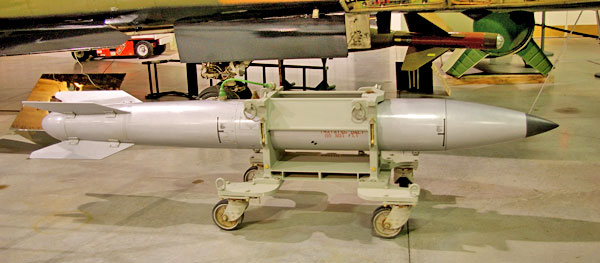Even if UAVs (Unmanned Aerial Vehicles) are often referred to as U.S. “killing machines”, the effect of a drone attack is almost forgettable if compared to the devastating and widespread effect of nuclear bombs, that remain America’s main means of deterrence.
According to the International Defence Review magazine the gravitational free falling B61 nuclear bombs are to get a precision guidance system that would allow for a greater accuracy and for a modest stand-off capability.
Earlier, the only way to compensate the lack of precision was an adjustment of the warhead power.
The B61 is the basic nuke in the USAF arsenal and the only US nuclear bomb present in the arms storages in Europe. Interestingly, the bomb (in the -12 variant) can be carried by all current and future American platforms including the LRS-B, and the Tornado.
It is an old bomb, since its beginnings date back to 1965 and the Los Alamos lab, and the production lasted for almost 35 years.
The bomb had 9 variants, some of which, such as B61-3 and B61-4 were designed to be used by tactical aviation, while B61-7 and B61-11 were prepared to be used from high altitudes by B-2 and B-52 bombers. 3,155 bombs were made, with a 1,000 having operational readiness status.
The modernization is a part of LEP (Life Extension Program) and is a priority, since B61 comes from the 1960s. B61-12 variant (400-500 examples) is to replace all earlier variants of B61, as well as the B83 bombs. In CONUS and Europe.
Written with David Cenciotti
Image credit: Wiki

















